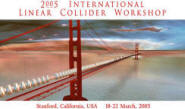Preface
Exploration of physics at the TeV scale holds the promise of addressing some of our most basic questions about the nature of matter, space, time, and energy. Discoveries of the Electroweak Symmetry Breaking mechanism, Supersymmetry, Extra Dimensions of space, Dark Matter particles, and new forces of nature are all possible. We have been waiting and planning for this exploration for over 20 years. In 2007 the Large Hadron Collider at CERN will begin its operation and will break into this new energy frontier. A new era of understanding will emerge as the LHC data maps out the Terascale.
With the LHC discoveries, new compelling questions will arise. Responding to these questions will call for a new tool with greater sensitivity - the International Linear Collider. Historically, the most striking progress in the exploration of new energy frontiers has been made from combining results from hadron and electron-positron colliders. The precision measurements possible at the ILC will reveal the underlying theory which gave rise to the particles discovered at the LHC and will open the window to even higher energies.
The world High Energy Physics community has reached an accord that an e+e- linear collider operating at 0.5-1.0 TeV would provide both unique and essential scientific opportunities; the community has endorsed with highest priority the construction of such a machine. A major milestone toward this goal was reached in August 2004 when the International Committee on Future Accelerators approved a recommendation for the technology of the future International Linear Collider. A global research and design effort is now underway to construct a global design report for the ILC. This endeavor is directed by Barry Barrish of the California Institute of Technology. The offer, made by Jonathan Dorfan on the behalf of ICFA, and acceptance of this directorship took place during the opening plenary session of this workshop.
The 2005 International Linear Collider Workshop was held at Stanford University from 18 March through 22 March, 2005. This workshop was hosted by the Stanford Linear Accelerator Center and sponsored by the World Wide Study for future e+e- linear colliders. It was the eighth in a series of International Workshops (the first was held in Saariselka, Finland in 1991) devoted to the physics and detectors associated with high energy e+e- linear colliders. 397 physicists from 24 countries participated in the workshop. These proceedings represent the presentations and discussions which took place during the workshop. The contributions are comprised of physics studies, detector specifications, and accelerator design for the ILC. These proceedings are organized in two Volumes and include contributions from both the plenary and parallel sessions.
This series of workshops will continue to be held and will continue to guide the development of the International Linear Collider. We look forward to the time when the discussion at future meetings centers on the data taken at the ILC!
